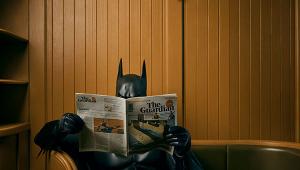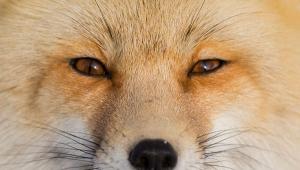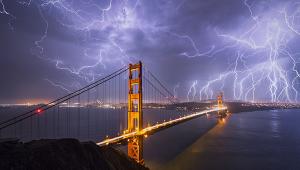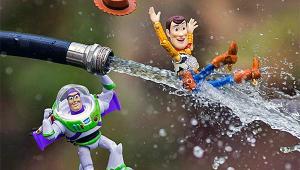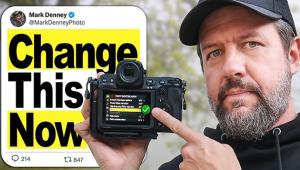Waking Nightmares: How Photographer Nicolas Bruno Captures His Darkly Beautiful Images

Nicolas Bruno was 15 years old when everything changed. His restful sleep became something very different, something called sleep paralysis. Conscious, his eyes open, he was unable to move, unable to stop the terrifying dreams and hallucinations in which he was pursued and tormented.
Unable to explain in words what he was seeing and feeling, he began to keep a dream journal of notes and sketches, and later created photographs that told the story of his sleep paralysis experience. Photographs were a kind of therapy, and an essential way to communicate. Nine years later, they still are.
The photos are sometimes literal representations of the nightmares; some are creative visualizations of the terror he’s felt. In the images he portrays both the aggressor and the victim, referring to both as “characters.” Often a place or an object will trigger a memory, and he’ll find a sketch in the dream journal that will make the associative connection.

Turning those sketches into photographs enabled him to not only communicate, but to gain some mastery over what was happening to him. He can’t stop or direct the dreams, but behind the camera he is in control.
Photo Methods
“I started photography in reverse,” Bruno says, explaining that he learned in middle school to use Photoshop to edit photos he found online. In high school he took his first photography class. In college he minored in art history and earned a BFA in photography.
With some obvious exceptions, Bruno portrays all the characters in his images, using in the early days a remote release to trigger the camera and later his camera’s interval timer to take the pictures as he moves from predetermined place to place within the scene. “I’ll throw in a huge blank memory card and let the camera shoot at a set interval while I’m doing all my setups,” he says.

Everything is meticulously planned and detailed—locations, props, costumes. Most often he’ll choose a shallow depth of field and place a marker—a stick or a piece of equipment—where his “main character” will be. “I’ll focus on that spot and make a bracket of where to be and where not to be,” is his description of the process. Within the plane of focus he’ll be sharp in the frame, but if he’s depicted running in the shot, he’ll often have to step back and forth several times to be sure he’s in focus. The most important thing is to keep the camera in the same spot so the composites layer perfectly.
There’s also the unexpected: the tide that comes in and washes away a camera; the ladder that insists on becoming buoyant.

A technique he calls image expansion lets him manipulate his size within a composite. Using the interval timer, the tripod-mounted camera captures his image in a setup. Then he’ll take four additional images of the empty scene, tilting the camera up, down, left, and right. Later he’ll stitch the shots to make the background bigger, then put himself into the image.
Family and friends help him from time to time, especially when his character is constrained in a photograph.

Props are found everywhere: thrift stores, antique shops, on trash pickup days in his neighborhood. Once the woods near his college yielded a bathtub that he dragged through the woods, over a stream, and up a hill to use in a photograph.
Sometimes he’ll get e-mail messages from people who offer items they no longer want. When someone suggested the loan of a diving helmet, Bruno ended up buying it. Other times he’ll use social media to ask for something specific, like a grandfather clock.
Nicolas Bruno is direct and open in discussing his experiences, but the one thing he doesn’t often talk about is the strength it takes to deal with sleep paralysis. He touched on it in an interview with CNN: “For people who haven’t experienced it, and say they want to—they really don’t. You’ve never woken up being choked out by shadow hands. You’ve never had a looming figure floating above your bed, screaming into your ear.”

Taking these pictures—“creating and making something beautiful out of something terrible”—is his therapy. “If I didn’t have art, I don’t know how I would have expressed what was going on,” he says, “and I don’t really know where I’d be.”
A portfolio of Nicolas Bruno’s images is featured at nicolasbrunophotography.com. Visit the Press section of the site for more information about him, his photographs, photo methods, and exhibits.

What’s in Bruno’s Gear Bag
Nicolas Bruno keeps it simple. Over the years he’s used Nikon DSLRs—a D60, a D600 (lost to a rising tide), and currently a D810—and, primarily, two Nikkor lenses—an 18-55mm f/3.5-5.6G and a 50mm f/1.8D. He always has a tripod, but says the makes and models aren’t worth mentioning. “I buy cheap tripods from thrift stores because I almost always wreck them with salt- and pond-water and sand.”









